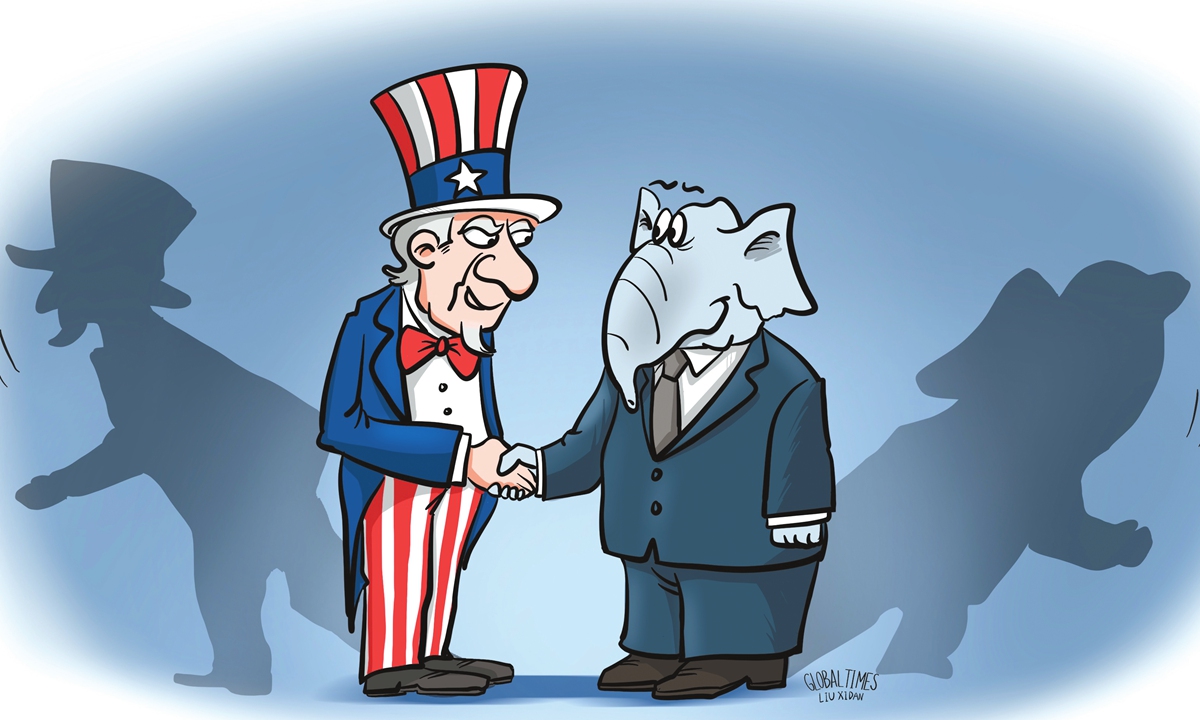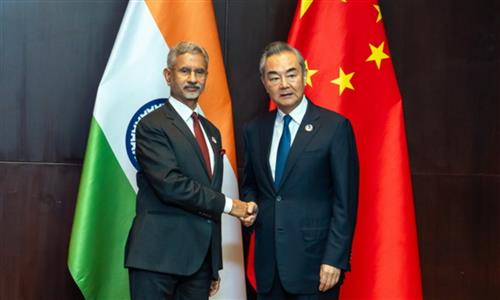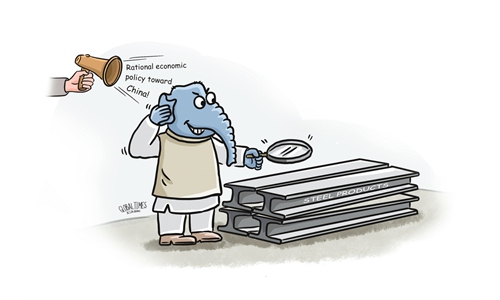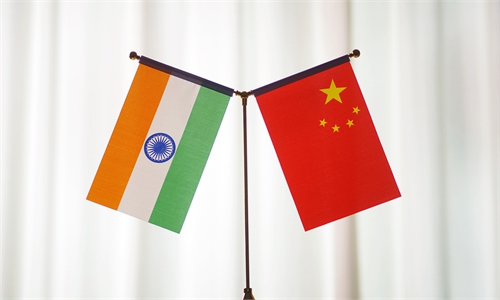
Illustration: Liu Xidan/GT
India "will never be a formal ally or partner of the United States." US Deputy Secretary of State Kurt Campbell said so several days ago during a hearing on US-China Competitiveness Beyond the Indo-Pacific. However, he stressed that maintaining good relations with New Delhi is strategically crucial. Campbell's remarks pragmatically defined the nature and limits of US-India relations, setting the tone for potential future developments in the partnership.
Some contradictions in US-India ties cannot be ignored.
The strategic goals of the US and India are fundamentally at odds. The Narendra Modi government is focused on transforming India into a leading global power and elevating its position to be on par with China and the US. Although India's capabilities are still limited in the short term, the Modi administration views India as an emerging power that aims to replace China, challenge the US and eventually become a global leader.
In contrast, the US strategy involves pitting two rising Asian powers against each other, using India to counterbalance China, and then undermining India to eliminate all competitors and sustain the US' own global dominance. In this regard, India is different from the roles played by Japan, South Korea, the Philippines and the UK, which actively support US interests. India's cooperation with the US is primarily driven by a desire for Western investment and technology. Attracting manufacturing and supply chains to bolster its own growth is also another motivating factor.
The US aims to sacrifice the interests of other countries to preserve its own hegemony, which clashes with India's goal of becoming a great power. India hopes to use the US to weaken China and then advance its own position, while the US sees India as a strategic pawn. This inherent conflict represents the biggest obstacle to future US-India cooperation.
The strategic interests of the US and India are markedly different. Due to their distinct cultures and stages of development, their strategic goals diverge significantly, leading to substantial disagreements on a variety of global issues including trade policy, agriculture, pharmaceuticals and climate change. For instance, the US government imposed high tariffs on India and restricted high-tech visas. Additionally, the two countries exhibit mutual distrust and even opposition on issues like the Russia-Ukraine conflict, the Israel-Palestine conflict, and global counterterrorism efforts.
The national characteristics of the US and India are fundamentally at odds. India, one of the four ancient civilizations, has a long history and has sought to achieve its national rejuvenation through religious sentiment. The US, however, is concerned about the Indian democracy, particularly under Modi's Bharatiya Janata Party (BJP). India, asserting itself as the "mother of democracy," is trying to create its own modernization narrative. Yet the US tends to criticize India's human rights record and the Modi government's treatment of Muslims.
The deepening engagement between the US and India also faces limitations due to India's capabilities. For example, India's reliance on Russian-made weapons poses significant challenges for US-India defense cooperation. While India's global importance is growing, with increased status and soft power, and its international image improved, it is not yet a major global balancer. There is a clear gap between India's strategic ambitions and its actual capabilities.
Recognizing this, India understands that fully aligning with either side in the China-US rivalry would be detrimental. Instead, a more prudent approach is to appear neutral publicly while privately leaning toward the US. Abhinav Pandya, a founder and CEO of the Usanas Foundation, an India-based geopolitical and security affairs think tank, published an article on The National Interest in June, titled, "Can the US-India Relationship Last?" It mirrors India's cautious stance toward its relationship with the US.
Although the US and India cannot become formal allies, they share many common interests in countering China and the changing international order. Both countries are looking to fully leverage each other's strategic orientations so they can maximize their strategic benefits, as reflected in Campbell's comments. India seeks to use its relationship with the US to achieve its strategic goal of surpassing China, while the US hopes to use India's strategic positioning to dilute China's influence and power.
In the future, it is expected that the two countries will enhance their strategic cooperation, particularly in areas such as industrial collaboration and resilient supply chains among India, the US and allies of the US.
Given the differences and conflicts in their strategic goals and interests, the US-India relationship will continue to evolve and intensify amid the shifting global order, but it will never fully become a formal alliance or partnership.
The author is former correspondent of the Global Times in India. opinion@globaltimes.com.cn



